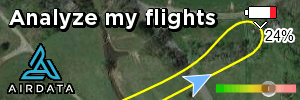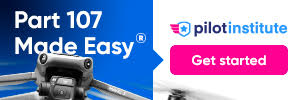This was one of my most challenging (in terms of preparation and planning) and rewarding flights to date - a mission where there was absolutely no room for error. It had to be executed perfectly on the first attempt.
I recently upgraded to the DJI Mini 5 Pro, which offers slightly improved battery performance on paper, and I wanted to test it in a demanding real-world scenario. The new 1-inch sensor was another key reason to put it through its paces in these difficult lighting conditions.
Careful mission planning was essential: calculating battery life, factoring in wind speed and direction, determining the exact takeoff time, cruise speed, and hyperlapse duration. The goal was to fit the entire 20-minute hyperlapse into a single battery cycle while still reserving enough capacity for a safe return. Camera settings also required precise planning - I locked exposure about two stops under at the start, which allowed me to maintain consistent shutter speed and ISO throughout. By the time I landed, I had just under 15% battery remaining - enough for a safe finish, but only just.
Initially, I intended to showcase only the hyperlapse footage. However, I later decided to include some dashcam shots as well - particularly the moment driving across the bridge toward the sunrise around 5:50 AM, and I cargo ship that was passing by about 15 minutes before takeoff - decided not to take off the drone earlier just to shoot it, as would not have enough battery for the mission and swapping battery was out of time scope as well.
It added a unique perspective to the final edit, blending the journey to the location with the drone’s aerial capture.
Hope you will enjoy it.
Happy and safe flying!
I recently upgraded to the DJI Mini 5 Pro, which offers slightly improved battery performance on paper, and I wanted to test it in a demanding real-world scenario. The new 1-inch sensor was another key reason to put it through its paces in these difficult lighting conditions.
Careful mission planning was essential: calculating battery life, factoring in wind speed and direction, determining the exact takeoff time, cruise speed, and hyperlapse duration. The goal was to fit the entire 20-minute hyperlapse into a single battery cycle while still reserving enough capacity for a safe return. Camera settings also required precise planning - I locked exposure about two stops under at the start, which allowed me to maintain consistent shutter speed and ISO throughout. By the time I landed, I had just under 15% battery remaining - enough for a safe finish, but only just.
Initially, I intended to showcase only the hyperlapse footage. However, I later decided to include some dashcam shots as well - particularly the moment driving across the bridge toward the sunrise around 5:50 AM, and I cargo ship that was passing by about 15 minutes before takeoff - decided not to take off the drone earlier just to shoot it, as would not have enough battery for the mission and swapping battery was out of time scope as well.
It added a unique perspective to the final edit, blending the journey to the location with the drone’s aerial capture.
Hope you will enjoy it.
Happy and safe flying!
Last edited:









